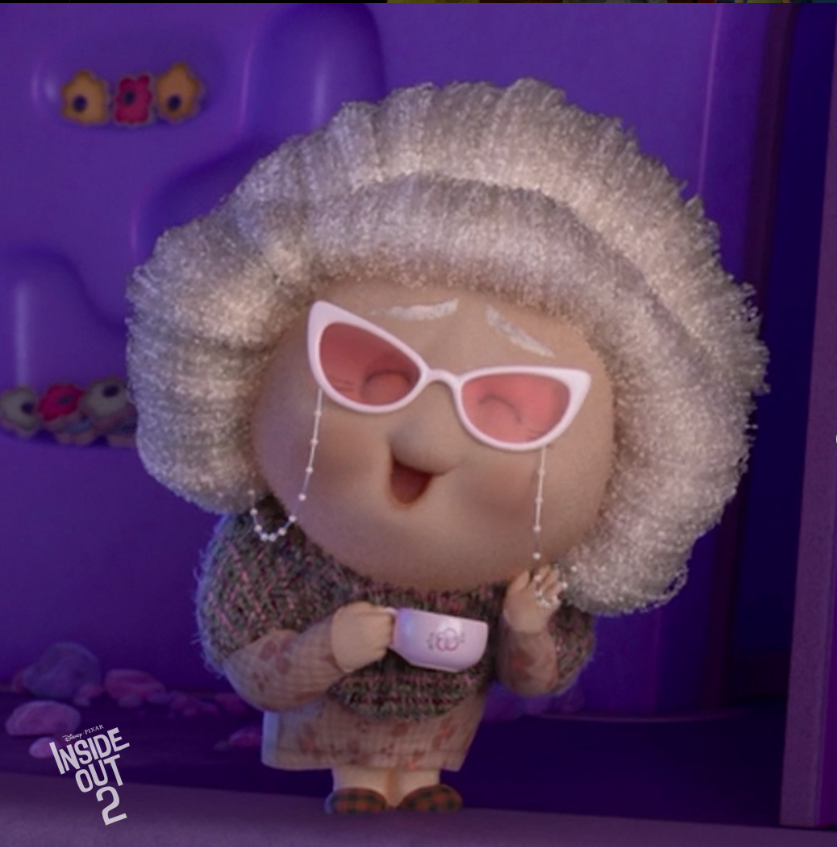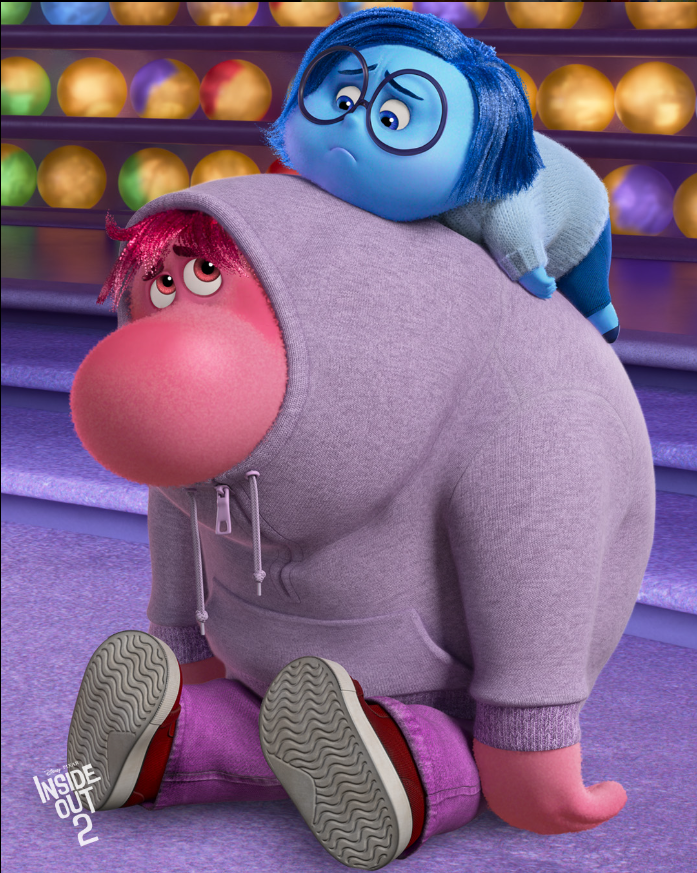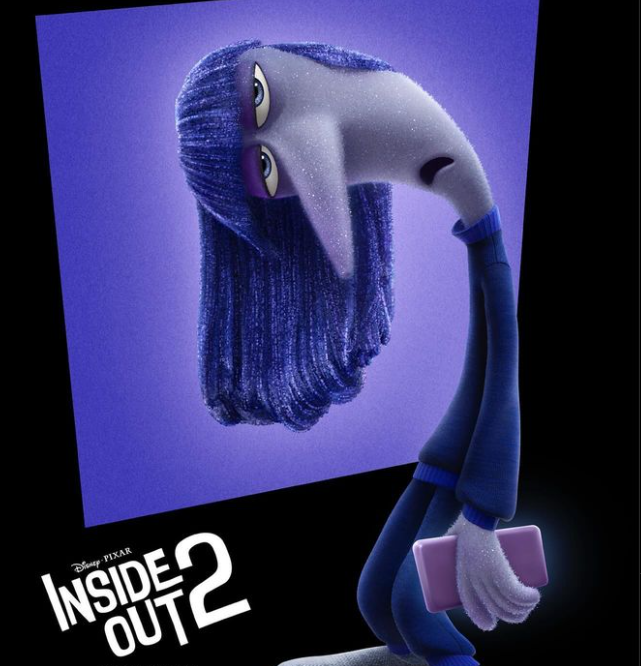Emotions… so human and yet so complicated. Emotions affect everything we do and every decision we make. No wonder marketers spend so much of their time trying to figure out how to evoke, use or navigate people's emotions. Don't worry! Disney and Pixar made a whole movie about it…
So I watched Inside Out 2…
Let me start by saying that I felt all the emotions. This movie will do that to you.
The film follows Riley — the same girl from the first film — as she grows up and enters her high school era. Most of us will remember the emotional rollercoaster that is high school.
The film manages to capture the whole experience, with all its confusion, anxiety and angst in a way that feels scary accurate — seriously, it's like they read my high school diary.
But as I watched the film, I noticed that all these emotions influence Riley's every move and decision in a way that marketers can only dream of doing.
That is why I, Alrika Möller from media update, compiled tips on navigating emotions to help marketers out.
Okay, let's take this one emotion at a time, starting with the OGs:
Joy
via GIPHY
In the movie, Joy — voiced by Amy Poehler — is the main honcho in Riley's head. She is taking charge. One thing that comes across really strongly in the film is the fact that it is not possible to be happy all the time.
That being said, we all want to be happy. We all want joy!
When marketers create a joyful feeling through advertising or the user experience, it will create a positive connection with clients. And when something sparks joy, you will keep going back for that feeling.
Positive imagery, sounds or references are the easiest way to create that joyful feeling; after that, marketers just need to keep it going and lean into that positive vibes.
Disgust
via GIPHY
This time around, Disgust is voiced by Liza Lapira and she does, in fact, capture the feeling of being disgusted exceptionally well. After all, when the ick kicks in, there is no getting rid of it.
People often get the ick or feel disgusted with something when the vibes are off or they are trying too hard. That is a lot of Gen Z speak, so let me translate:
When a brand is trying too hard to be quirky, trendy or cool, customers can spot it — even subconsciously — and it leaves them with an uneasy or 'disgusted' feeling. The best way to avoid this is to be true to who the brand is.
Sadness
via GIPHY
Phyllis Smith voices the lovable and oh-so-huggable Sadness — an emotion that can often get a bad rep. The story of Riley and her rowdy bunch of emotions shows us that sadness is not always a bad thing.
Being sad can often be a very good thing. I mean, they even let her cry in the second movie because — and I quote — "she needs this".
Using truly emotional tactics — or 'sadvertising', as some might call it — releases a chemical in the brain that forces the viewer to pay attention. Once you have their attention, you lead them to feel empathy.
It has been scientifically proven that people are more likely to trust you and / or spend money when you make them feel empathy.
There is no arguing with science.
Fear
via GIPHY
Fear is a slightly wimpy yet very necessary emotion voiced by Tony Hale, a man who understands the concept of safety first.
Fear can be a very powerful emotion. The moment our fight, flight or freeze reaction is triggered, some interesting things can happen.
Fear can also be a great motivator. That is why it can be very useful in marketing.
The key is to either tap into a fear that already exists, or enlighten your audience about a fear they did not have until you told them about it. Then you offer your brand or product as the solution.
Anger
via GIPHY
Actor Lewis Black, the voice of Anger in Inside Out 1 and 2, managed to show us a softer side of the emotion this time around. We so often think of anger as a negative thing, but it doesn't have to be.
A feeling of anger usually comes from something that you wish to change, which can be a great way to connect people. Once you have them connected, you can use that anger to create a sense of urgency, which leads to action.
Now that we have covered all the well-known emotions, we can dive into the new friends from the film.
Nostalgia
Instagram
One of the new emotions we meet in this film is Nostalgia. She is a sweet old lady — voiced by June Squibb — that comes and goes in the same way that nostalgia comes and goes. Fitting, I know.
Generally speaking, people like nostalgia (the emotion and the character). It makes us feel warm and fuzzy, by calling back to good times.
Advertisements have the ability to trigger nostalgia in a way that will make consumers connect with the brand and link it to that warm and fuzzy feeling. They will then go and spend money on that brand in the hope of making that feeling last.
Embarrassment

Instagram
The character Embarrassment, voiced by Paul Walter Hauser, is not easy to miss. He might not be loud, but he is unavoidable.
It is human to not want to be embarrassed. We will continue to fake wave for much longer than we should, just so that the stranger doesn't realise we incorrectly waved at them.
We don't enjoy feeling embarrassed, and marketers can use that to their advantage.
Marketers can make people believe that they will be embarrassed if they don't use your brand. It is also possible to insinuate that your product can prevent embarrassment. You can then have most people — especially young people — jumping at the chance.
Ennui
Instagram
To be honest, Ennui — voiced by Adèle Exarchopoulos — is as cool as I wish I was. She is so calm and chic. But most people don't really know what ennui is, other than a fancy-sounding French word.
Ennui is the feeling of listlessness and lack of excitement or interest. It is that moment when a teenager replies with a monotone 'fine' when you ask them how their day was.
While it might be fun to be that cool, it is not the best for marketing. Marketers should strive to end consumers' ennui by creating excitement.
When people feel excited about something, they will think about it nonstop and be more willing to spend money on the thing that has them feeling all sparkly.
Envy
Instagram
This emotion might appear tiny, but boy is she mighty. Ayo Edebiri's take on this character absolutely captures the fact that envy is about more than just things you want — it's also who you want to be.
Envy is the essence of wanting something that someone else has. The best way to create envy in your audience is to use influencer marketing.
People are envious of the lifestyle of influencers, which ultimately encourages them to buy the things these influencers have. It really is that simple.
Anxiety
via GIPHY
In this film, Anxiety is a big deal. Actress Maya Hawke plays the character of Anxiety concerningly well. She really knows what it feels like to be anxious — so do I, but we won't get into that right now.
In the film, Anxiety herself explains the concept of anxiety like this: "Fear focuses on the dangers you can see, anxiety focuses on the dangers you cannot see." How poetic.
Anxiety might seem like a villain, in life and the film, but they make it clear that anxiety comes from a place of wanting to help and protect. Nevertheless, it might get a little out of hand every once in a while.
Many consumers experience anxiety — especially after the whole 2020 thing. That is why they are looking for brands that will reassure them. Provide your consumers with information that will make them feel safe with your brand, and they will become loyal customers.
We all have emotions. Depending on what generation you fall in, you might be more or less inclined to discuss those emotions, but they are still there. Marketers need to know how to use, evoke and navigate every emotion from the Inside Out.
Did you enjoy this piece? Let us know your thoughts in the comment section below.
*Image courtesy of Pixar’s official Instagram account